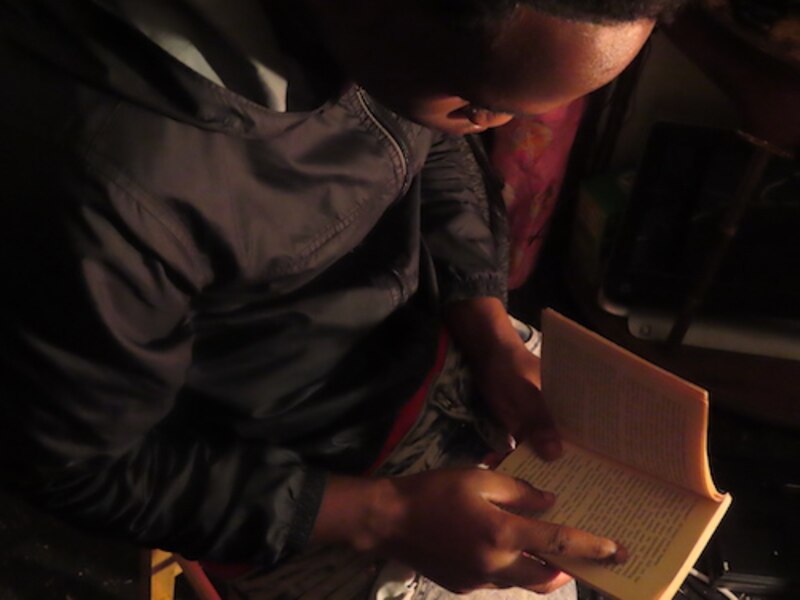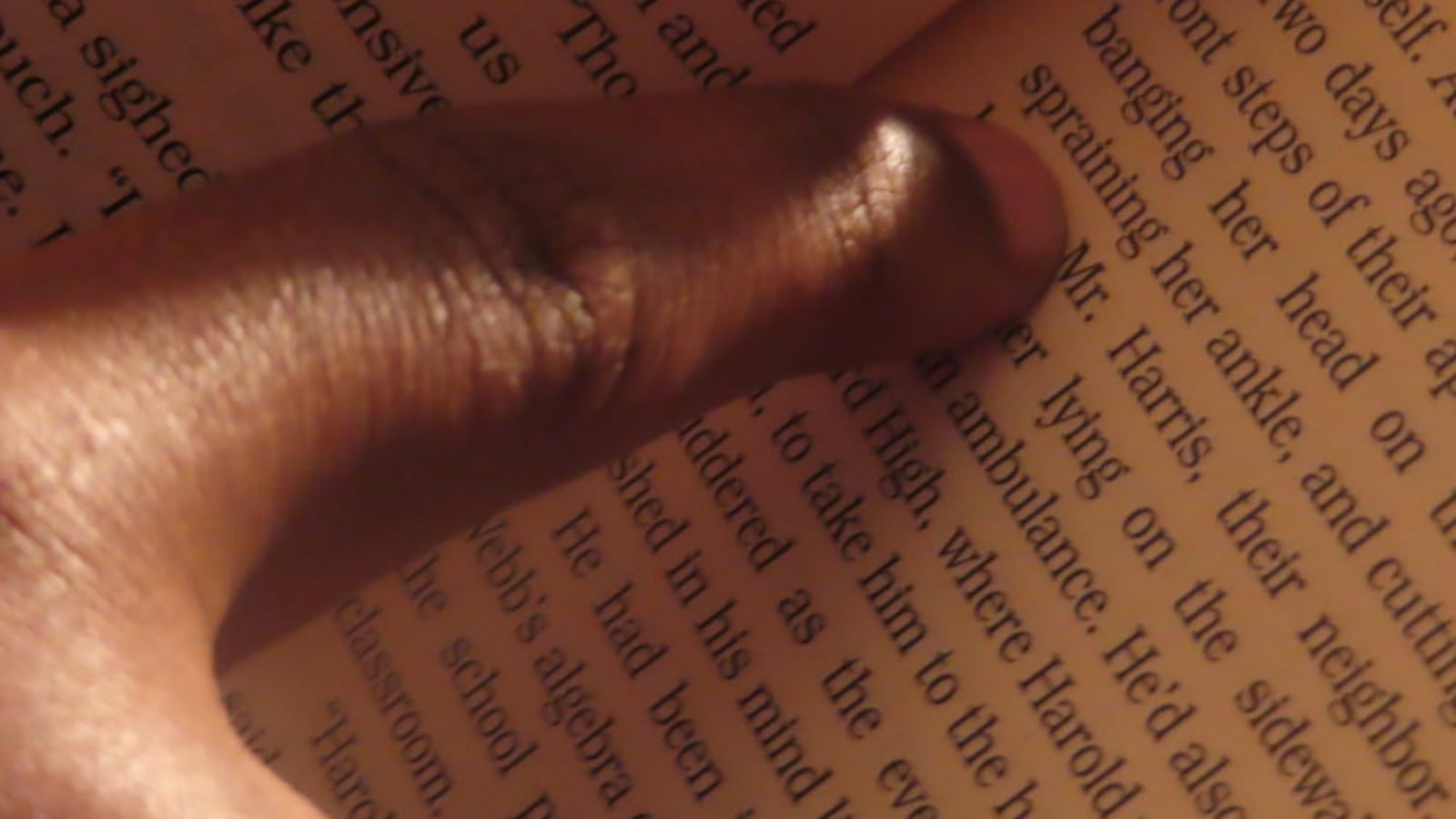Experts say it’s not impossible to teach older students how to read.
But late-stage intervention for students like Javion Grayer — a 16-year-old who reads at a second-grade level after more than a decade in Chicago schools — takes daily practice and consistent one-to-one lessons with instructors trained to teach reading.
Related: How it feels to be Javion: 16 and struggling to read in Chicago Public Schools
Such remediation, which expert say can’t happen in a general education setting or a large classroom, is something that most budget-strapped urban school districts, such as Chicago Public Schools, are ill-equipped to provide.
The district, though, insists it is taking steps to bolster literacy instruction. Just an hour after Chalkbeat published its profile of Javion — looking at how the teen fell so far behind and revealing the anguishing effects of his low literacy skills — Chicago Public Schools said it is developing a central reading curriculum that should be completed in the next two to three years. The goal: to ensure high-quality reading instruction and online library resources district-wide to support equitable access to content for readers at all grade levels, according to a district spokesperson.
“It’s not acceptable for any student to leave our schools without being prepared for success, and the district will continue to build upon its academic improvements to ensure students have quality instruction and strong systems of support across the district,” said district spokesman Michael Passman in a statement. However, the statement skirted questions about specific interventions for older readers playing catch up.
What it will take to get students like Javion to grade level, is multipronged, literacy experts say.
“That’s obviously somebody who has fallen through the cracks,” said Rebecca Treiman, a professor of child developmental psychology at Washington University at St. Louis. “But there are ways to address these problems and it’s not like there’s a single age when somebody can read.”
Treiman, whose work focuses on spelling and literacy, echoed recommendations from other reading specialists, including nationally renowned literacy expert Louisa Moats, former Chicago schools reading director Tim Shanahan, and Alfred Tatum, dean of the college of education at the University of Illinois at Chicago — all of whom spoke to Chalkbeat.
After third grade, classroom instruction tends to move away from teaching students how to read and toward asking them to read in order to learn new material about other subjects.
For Javion and other older students with large literacy gaps, the experts recommended a return to basic phonics, in an effort to improve decoding ability, a daily diet of reading, and comprehension exercises. Shanahan and Treiman suggested a review of prefixes, suffixes, and common word roots. Moats prescribed helping students recognize commonly used “sight words,” and a focus on boosting vocabulary through reading and listening to texts. Treiman also recommended a curricular emphasis on students’ ability to perform everyday tasks, like filling out job applications and reading recipes. And Tatum was adamant about the need for culturally responsive curriculum, which takes into account students’ cultural identity, ethnic background and experiences.
However, even if such a rigorous remedial reading program were put in place in Chicago Public Schools, it’s still unclear how it would address the needs of older students. Such a program would also be optional for Chicago schools, since the district’s more than 640 schools, especially charter and contract schools, have a lot of autonomy to select curriculum. Since at least the early 2000s, Chicago has increasingly moved toward giving principals more freedom to choose what and how students are taught.
By contrast, the Houston Independent School District provides schools with guidance about the pace, scope, and sequence of English Language Arts instruction from pre-K-12, including “strategic reading and writing” curriculum for 9th and 10th graders who need remediation.
Having a centralized curriculum — while not a magic bullet — is a way to ensure that students all start with certain building blocks of reading instruction, especially in the crucial early elementary years. And the earlier reading challenges are discovered, the better, experts say.

Shanahan, formerly of Chicago Public Schools, recommended that the district push for about 50 minutes of phonics instruction a day in grades K-5.
“That’s how you figure out words in those early grades,” said Shanahan, a professor emeritus at the University of Illinois at Chicago, where he was founding director of the UIC Center for Literacy. “But I’d be very surprised if that’s true at more than half the [district] schools.”
Shanahan also served on the National Reading Panel, which Congress convened to evaluate research about teaching reading. The panel’s findings favored a focus on decoding words by breaking them into parts and sounding them out. That’s as opposed to the “whole language” approach many schools across the nation have pushed, where students learn to use pictures or context clues to fill in ideas and recognize words.
In 2017 the percent of students in Chicago performing at or above reading proficiency was 27 percent on the National Assessment of Educational Progress. That represents significant progress — in 2002, that number was 11 percent — but remains a cause for concern, given the lack of intensive reading instruction after third grade.
Students who fall behind after the third grade are more likely to be poor readers throughout life, and more likely to drop out of school, research shows. Students for whom English is a second language, especially recent arrivals to the United States or children whose parents lack English proficiency, are more prone to reading struggles. Meanwhile, serious gaps in reading ability often correlate with race and family income. Black and Latino students and those from low-income families tend to post lower test scores than their white and more affluent counterparts — largely the result of generations of racial and educational inequities.
Moats said that such discrepancies often stem from “teacher training and the lack of it, the placement of less skilled, less experienced teachers in schools that are high minority populations or schools in less desirable neighborhoods.”
Reading failure, she said, “is way more common than anyone acknowledges. It affects way too many kids, and it’s unnecessary because it’s preventable; we know how to teach reading from decades of scientific work on how to teach kids to read.”

